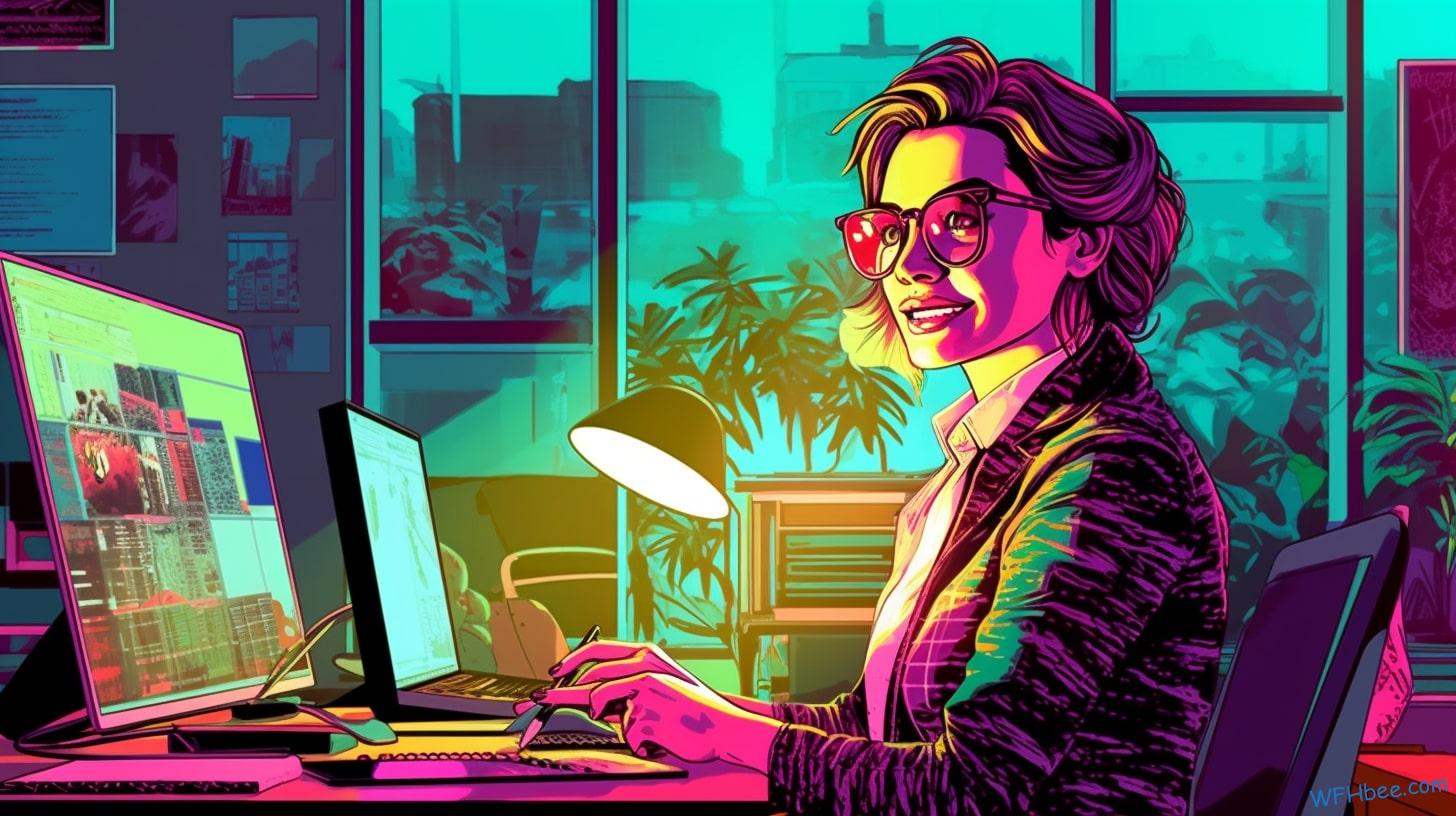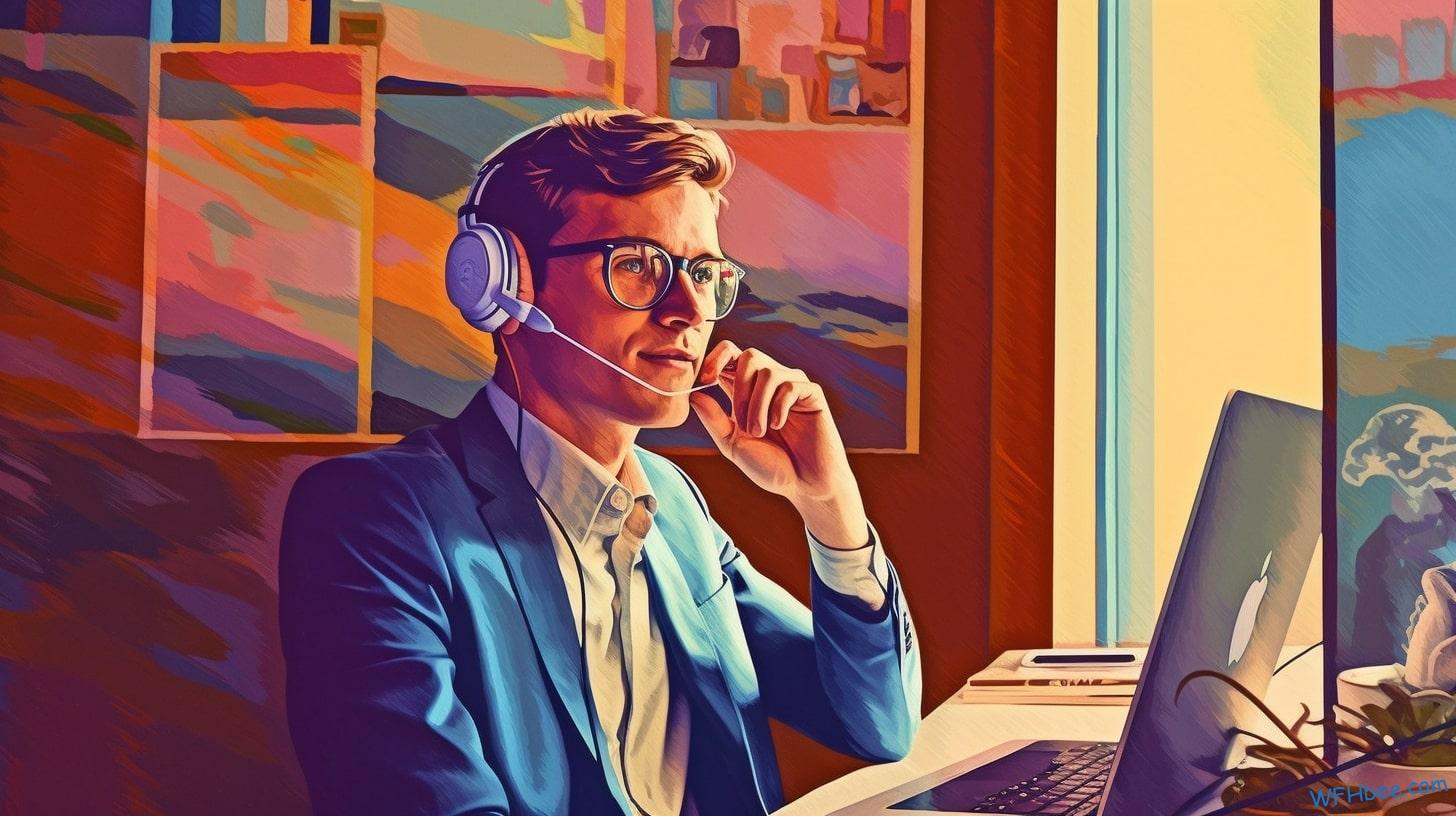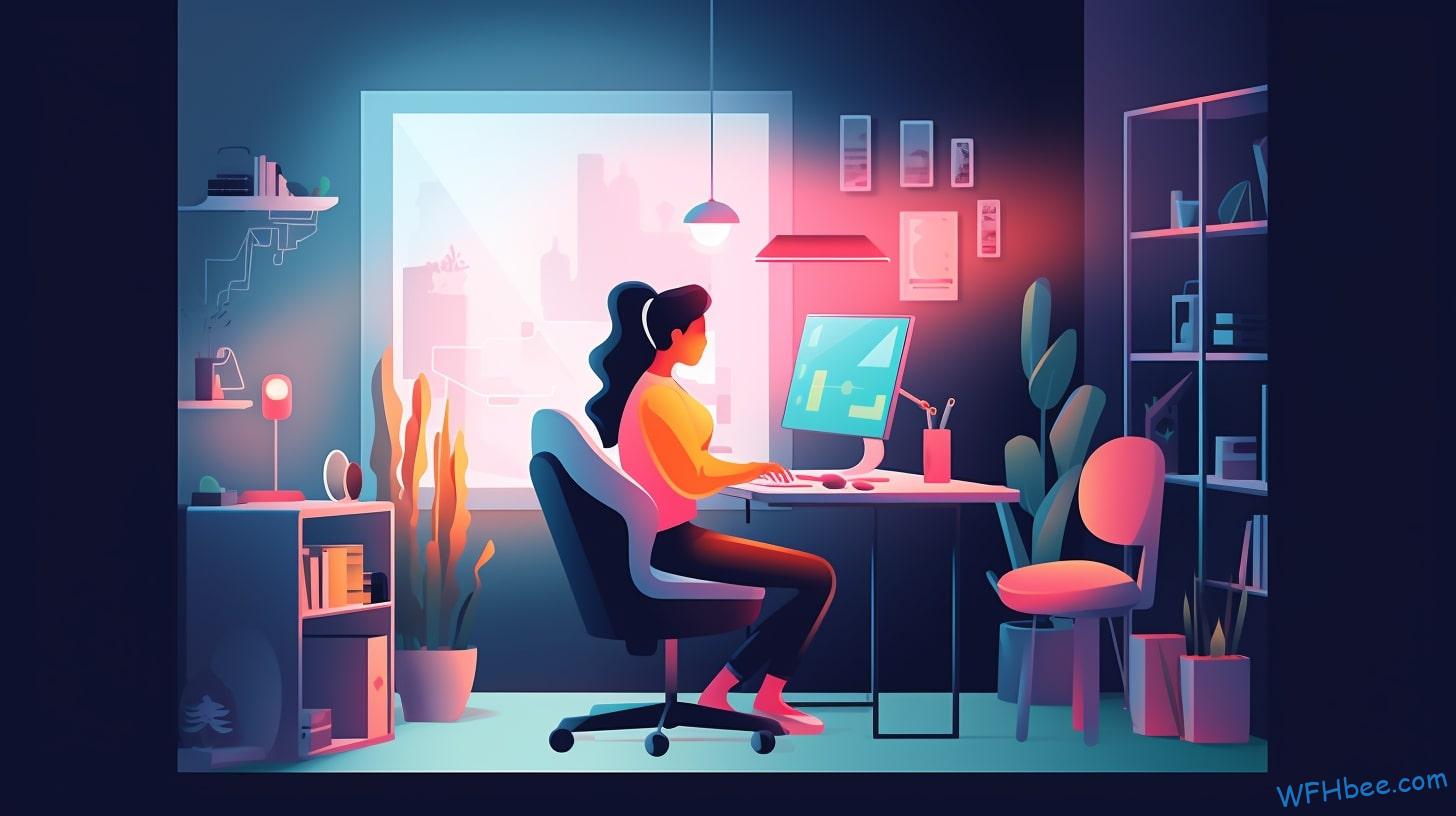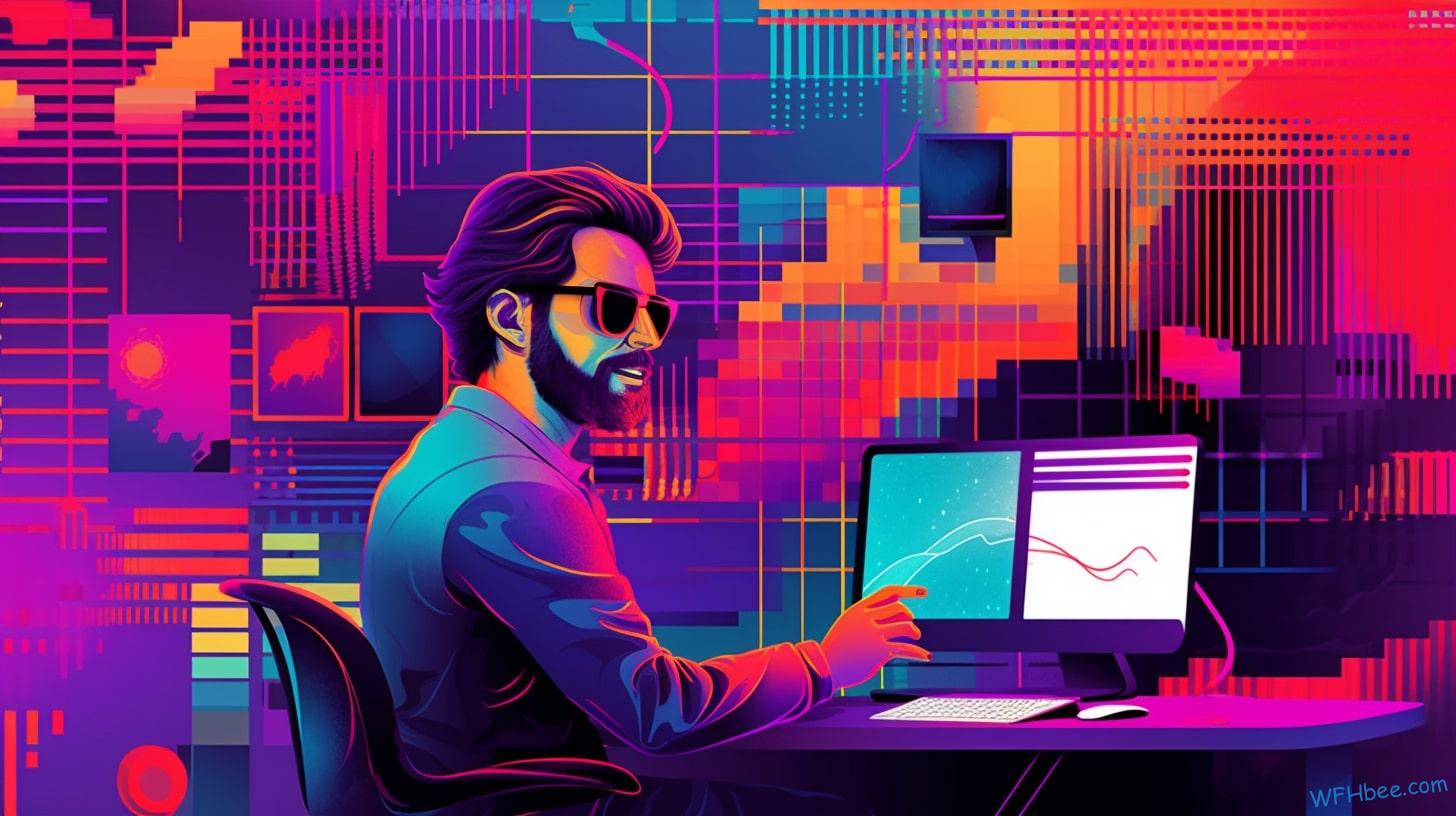Picture this: you, an architect, working from anywhere in the world while designing cutting-edge buildings. No more long commutes or rigid office hours. With remote work, you have the freedom to create and collaborate on architectural projects from the comfort of your own space.
In this article, we explore the benefits of remote work for architects and provide strategies for successful collaboration with a distributed team.
Get ready to embrace a new era of architectural design that breaks free from traditional constraints.
Key Takeaways
- Remote work for architects offers increased flexibility and the ability to work from anywhere, leading to a better work-life balance.
- The use of online project management platforms, cloud-based storage solutions, and communication tools enhances collaboration and productivity in distributed design.
- Strategies such as establishing clear communication channels, encouraging collaboration through online software, and fostering a positive team culture are crucial for successful collaboration with a remote team.
- Overcoming challenges in remote architectural design can be achieved through clear communication, defined roles and responsibilities, and the utilization of virtual tools and technology.

Table of Contents

The Benefits of Remote Work for Architects
You’ll love the flexibility and increased productivity that remote work brings to architects. Remote work offers numerous benefits for architects, allowing them to have more freedom in their work and personal lives.
One of the main advantages is the ability to work from anywhere, eliminating the need for a physical office space. This means you can design and collaborate on projects without being tied down to a specific location.
Remote work also provides architects with the opportunity to create a personalized work environment that suits their needs. Whether it’s designing in a cozy home office or finding inspiration in a local café, remote work allows you to choose where and how you want to work. This freedom not only enhances creativity but also improves overall job satisfaction.
Another benefit of remote work is the increased productivity it brings. Without the distractions of an office setting, architects can focus on their tasks without interruptions, leading to greater efficiency. Additionally, remote work eliminates commuting time, allowing you to spend more time on actual design work rather than sitting in traffic.
However, like any workplace arrangement, remote work does come with its challenges. Communication can be more difficult when working remotely as face-to-face interactions are limited. To overcome this challenge, architects should utilize technology such as video conferencing and project management tools to maintain effective communication with clients and colleagues.

Tools and Technologies for Distributed Design
To collaborate effectively in a distributed environment, utilizing the right tools and technologies is crucial. When it comes to remote work for architects, having access to the right tools can greatly enhance collaboration and productivity. With the advancements in technology, there are now numerous tools available that enable architects to work together seamlessly, regardless of their physical locations.
Online project management platforms like Trello and Asana provide a centralized space where architects can collaborate on design projects. These platforms allow for easy communication, task assignment, and progress tracking. Additionally, cloud-based storage solutions like Google Drive or Dropbox facilitate file sharing and version control, ensuring that everyone has access to the latest project files.
Communication tools such as Slack or Microsoft Teams play a vital role in fostering effective collaboration. These platforms offer real-time messaging capabilities, video conferencing features, and document sharing functionalities. Architects can easily communicate with team members, share ideas, review designs together, and make necessary changes promptly.
Virtual reality (VR) and augmented reality (AR) technologies have revolutionized the way architects collaborate remotely. By using VR headsets or AR applications on their smartphones or tablets, architects can virtually walk through 3D models of their designs together. This immersive experience allows for better visualization and understanding of complex architectural concepts.

Strategies for Collaborating With a Remote Team
Effective collaboration with a remote team requires implementing strategies that prioritize communication and coordination. It is crucial to foster creativity within your team when working remotely. Here are some strategies for remote collaboration that will help you achieve this.
Firstly, establish clear channels of communication. Utilize instant messaging platforms like Slack or Microsoft Teams for quick and efficient communication among team members. Regularly check in with your team through video conferences or virtual meetings to discuss progress and address concerns. Open and transparent communication fosters creativity by allowing everyone to share ideas freely.
Secondly, encourage collaboration through online tools and platforms. Use project management software like Trello or Asana to assign tasks, track progress, and share files. These tools facilitate organization and enable team members to collaborate on projects in real-time, regardless of their physical location.
Another important strategy is promoting a positive team culture. Encourage regular social interactions through virtual coffee breaks or informal chats where team members can bond and build relationships outside of work-related discussions. This helps create a supportive environment where creativity can thrive.
Lastly, celebrate achievements as a team. Recognize the efforts and successes of individual team members publicly, whether through an email announcement or during a virtual meeting. This boosts morale and motivates the entire team to continue contributing creatively.

Overcoming Challenges in Remote Architectural Design
Navigating the challenges of collaborating on architectural projects from different locations can be easier with proper communication and the use of virtual tools. When working remotely, it is essential to overcome the unique challenges that arise during the design process. Here are some strategies to help you conquer these obstacles and achieve successful remote collaboration:
- Clear Communication:
- Foster open lines of communication between team members, utilizing video conferences, instant messaging, and project management software.
- Clearly define roles and responsibilities within the team to avoid confusion or duplication of efforts.
- Utilize Virtual Tools:
- Embrace technology by using virtual reality (VR) software or augmented reality (AR) applications to visualize designs in real-time.
- Collaborate on shared platforms that allow multiple users to work simultaneously on design concepts, such as cloud-based CAD software.
By implementing these strategies, you can enhance your remote design process and overcome common collaboration challenges. Embracing virtual tools not only allows for seamless communication but also enables a sense of freedom in working from any location. With VR or AR applications, you can immerse yourself in your designs as if you were physically present. Additionally, cloud-based CAD software facilitates real-time collaboration with team members across various locations.
Remember that successful remote collaboration requires active participation and efficient utilization of virtual tools. By embracing technology and maintaining clear communication channels, you can navigate through any challenges that arise during the remote architectural design process.

Establishing Effective Communication in a Distributed Setting
Establishing clear and open lines of communication is crucial in a distributed setting to ensure successful collaboration. As a member of a remote team, you desire freedom and flexibility in your work. Effective communication strategies are essential to maintain team dynamics and achieve common goals.
In a distributed setting, it is important to utilize various communication tools that promote seamless interaction among team members. Platforms like Slack or Microsoft Teams allow for real-time messaging, file sharing, and video conferencing. By utilizing these tools effectively, you can facilitate quick exchanges of ideas and feedback, fostering a sense of unity within the team.
Regular virtual meetings play an integral role in maintaining effective communication among remote teams. These meetings provide an opportunity to discuss project updates, clarify expectations, address challenges, and celebrate achievements together. Remember to actively participate in these meetings by expressing your thoughts and opinions openly.
Clear documentation is another critical aspect of effective communication in a distributed setting. Documenting discussions, decisions, and action items ensures everyone remains on the same page while working remotely. Sharing files through cloud-based platforms such as Google Drive or Dropbox enables easy access to information for all team members.
Building trust within your remote team is fundamental for successful collaboration. Be proactive in reaching out to colleagues regularly outside of formal meetings to build personal connections. This fosters better understanding and empathy among team members.

Maintaining Design Quality in Remote Architectural Projects
Maintaining high-quality designs can be challenging when working on architectural projects remotely. However, with the right tools and mindset, you can ensure that your design stays true to your vision.
Here are some tips for maintaining design quality in remote architectural projects:
- Clear Communication: Effective communication is key to successful remote collaboration. Make sure you have regular check-ins with your team to discuss design progress and address any concerns or questions. Utilize video conferences or virtual meetings to visually review designs together.
- Use screen sharing: Share your screen during design reviews to provide a clear visual representation of your ideas. This allows everyone to see the details and make suggestions in real-time.
- Provide detailed feedback: When reviewing designs remotely, it’s important to provide specific feedback that addresses both the strengths and areas for improvement. Be clear about what changes you would like to see and offer constructive suggestions.
- Collaborative Tools: Leverage technology and collaborative tools designed specifically for architects working remotely. These tools enable seamless sharing of files, real-time editing, and effective project management.
- Cloud-based platforms: Utilize cloud-based platforms that allow multiple users to access and edit design files simultaneously. This ensures everyone is working on the most up-to-date version of the project, promoting efficient collaboration.
- Virtual reality (VR): Embrace VR technology as a way to immerse yourself in your designs from anywhere. With VR headsets, you can explore spaces as if you were physically present, enabling better decision-making during the design process.
By implementing these strategies and utilizing collaborative tools, you can maintain high-quality designs even when working on architectural projects remotely.
Embrace the freedom that remote work offers while ensuring that your creativity shines through in every aspect of your design process.

Ensuring Security and Confidentiality in Remote Design Work
By implementing secure file sharing platforms and adhering to strict confidentiality protocols, you can protect sensitive information when working remotely on design projects. Data protection is crucial in today’s digital age, especially when it comes to remote access. As an architect embracing the freedom of remote work, it’s essential to ensure the security and confidentiality of your design work.
When working remotely, it’s important to use secure file sharing platforms that encrypt your data both in transit and at rest. These platforms provide a safe environment for storing and transferring sensitive project files. Look for features like end-to-end encryption and multi-factor authentication to add an extra layer of protection.
In addition to using secure file sharing platforms, it’s crucial to adhere to strict confidentiality protocols. This includes maintaining strong passwords, regularly updating software, and being cautious about phishing attempts. Always double-check the authenticity of emails or messages before clicking on any links or opening attachments.
Furthermore, consider using virtual private networks (VPNs) when accessing company resources remotely. VPNs create a secure connection between your device and the company’s network by encrypting your internet traffic. This prevents unauthorized access and ensures that your data remains protected.
Remember that protecting sensitive information is not only about technology but also about practicing good habits and being mindful of potential risks. By following these measures – implementing secure file sharing platforms, adhering to confidentiality protocols, and utilizing VPNs – you can confidently work remotely while safeguarding important design projects from unauthorized access or data breaches. Embrace the freedom of remote work without compromising the security of your valuable information.

Remote Project Management for Architects
When managing projects remotely, it’s crucial to establish clear communication channels and set realistic goals for your team. As an architect working in a distributed environment, remote project management becomes essential to ensure the smooth coordination of design efforts. Here are some tips to help you navigate this new way of working:
- Establish Remote Design Coordination
- Use collaborative tools like Slack or Microsoft Teams to facilitate real-time communication with your team members.
- Schedule regular video conferences to discuss project updates, address any concerns, and foster a sense of camaraderie among remote team members.
- Conduct Remote Design Reviews
- Leverage digital platforms like Zoom or Google Meet to conduct virtual design reviews with clients and stakeholders.
- Share screen presentations or use interactive whiteboards to showcase design concepts and gather feedback in real-time.
By implementing these strategies, you can maintain effective remote design coordination effortlessly. Embrace the freedom that comes with working remotely by utilizing technology to its fullest potential. With clear communication channels established and realistic goals set for your team, remote project management becomes more seamless and efficient.
Remember that flexibility is key when managing projects remotely—embrace innovative approaches and adapt as needed. By embracing new technologies and leveraging virtual collaboration tools, you can ensure that your architectural projects thrive even in a distributed work environment.

Remote Design Presentations and Client Communication
Now that you have mastered remote project management, it’s time to dive into the exciting world of remote design presentations and client communication.
With the freedom to work from anywhere, you can showcase your architectural brilliance to clients all over the world without ever leaving your home office.
Gone are the days of scheduling in-person meetings and traveling long distances for design reviews. Thanks to technology, you can now conduct remote design reviews with ease. Whether it’s sharing your screen during a video call or using virtual reality tools to give clients an immersive experience, the possibilities are endless.
Remote client presentations have also become seamless and efficient. Instead of gathering everyone in a physical meeting room, you can use video conferencing platforms to present your designs remotely. Share your screen, highlight key features, and answer questions in real-time as if you were there in person.
Not only does this save time and money on travel expenses, but it also allows for increased flexibility. You can easily accommodate clients in different time zones without having to adjust your entire schedule.
Embrace this new era of remote work and take advantage of the freedom it offers. By harnessing technology for remote design reviews and client presentations, you can showcase your creativity on a global scale while enjoying the comforts of working from wherever inspires you most.

The Future of Remote Work in the Architectural Industry
Imagine the endless possibilities and flexibility that lie ahead as you embrace the future of remote work in the architectural industry. The impact of remote work on architectural firm culture is immense, opening up a whole new world of freedom and autonomy. Here’s what it could look like for you:
- Work-life integration: No longer bound by traditional office hours, you have the power to create your own schedule. Whether you’re an early bird or a night owl, remote work allows you to design your day around your personal preferences. Imagine starting your morning with a cup of coffee on your porch while brainstorming ideas for your latest project.
- Global collaboration: Remote work breaks down geographical barriers and offers the potential for international collaboration in architectural design. Picture yourself collaborating with architects from different parts of the world, each bringing their unique perspective to a project. Through video conferences and online platforms, you can seamlessly exchange ideas, share feedback, and collectively create groundbreaking designs.
The future of remote work in the architectural industry holds incredible promise for those who desire freedom and flexibility. As more firms embrace this new way of working, we can expect to see a transformation in firm culture – where trust and autonomy take center stage. Gone are the days of strict hierarchies and rigid office structures; instead, imagine an environment where creativity thrives in a truly collaborative setting.

Frequently Asked Questions
How Can Architects Ensure Effective Time Management While Working Remotely?
To ensure effective time management while working remotely, track your time and set clear goals. Use productivity tools to stay organized and focused. Enjoy the freedom of remote work while maximizing your productivity.
What Are the Best Practices for Maintaining Creativity and Inspiration in a Remote Architectural Design Setting?
To maintain creativity and inspiration while working remotely as an architect, explore remote collaboration techniques for architectural design. Additionally, develop strategies for balancing work and personal life to ensure freedom and a fulfilling remote work experience.
How Can Architects Overcome Potential Communication Barriers When Collaborating With a Remote Team?
You can overcome communication barriers and collaborate effectively with your remote team. Break down the walls by using technology, fostering open communication, and embracing different perspectives. Together, you’ll create amazing architectural designs from anywhere in the world.
What Steps Can Architects Take to Ensure Data Security and Confidentiality in Remote Design Work?
To ensure data security and confidentiality in remote design work, take steps to address remote work challenges. Implement secure communication tools and protocols, educate your team on best practices, and regularly review and update your security measures.
How Can Architects Effectively Manage and Track Progress on Remote Architectural Projects?
To effectively manage and track progress on remote architectural projects, you can use project management software like Trello or Asana. Collaborate with your remote team, set goals, assign tasks, and monitor progress for a seamless workflow.

Conclusion
In conclusion, remote work offers numerous benefits for architects. This includes increased flexibility and access to a global talent pool. By utilizing tools and technologies for distributed design, collaborating with a remote team becomes seamless.
Although challenges may arise in remote architectural design, effective communication strategies can help overcome them. Additionally, ensuring security and confidentiality is crucial when working remotely.
As the architectural industry evolves, remote project management and client communication will continue to play an integral role. Embracing remote work is not just a trend; it is the future of the industry, adding sophistication to the way architects operate.







